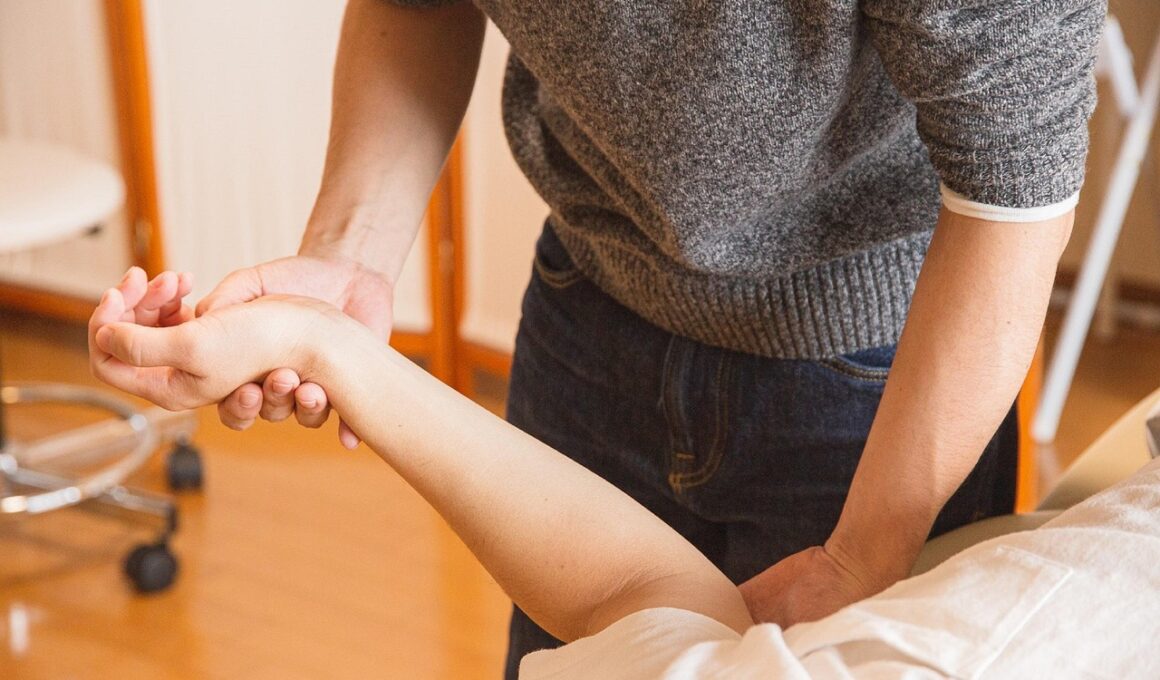Virtual Reality Therapy for Vestibular Rehabilitation
Virtual Reality (VR) therapy is rapidly emerging as a potent tool in vestibular rehabilitation. The vestibular system, responsible for balance and spatial orientation, is critical for maintaining stability. Traditional rehabilitation methods, while effective, often fail to engage patients fully. VR therapy provides an immersive experience designed to enhance patient involvement in their treatment. By visually stimulating the vestibular system in a controlled environment, patients can perform balance exercises that simulate real-world scenarios. This innovative approach allows for tailored exercises that adapt to the individual’s abilities. The effectiveness of VR in vestibular rehabilitation lies in its ability to create a challenging yet supportive environment. Patients can improve their coordination and stability without the fear of injury in uncontrolled settings. VR systems can continuously monitor progress, providing feedback and adjustments to therapy as needed. Researchers suggest that this method can lead to better outcomes, significantly reducing symptoms such as dizziness and imbalance. As technology advances, the application of VR in rehabilitation will likely expand, offering hope for individuals recovering from vestibular disorders. This modernization in therapy represents a promising frontier in the treatment of balance and coordination issues.
Building on the excitement surrounding VR therapy, it is crucial to understand various benefits associated with its application in vestibular rehabilitation. One major advantage is enhanced engagement during sessions as patients feel more motivated to participate. Traditional exercises can feel repetitive and boring, leading to decreased compliance. In contrast, VR therapy presents activities in a captivating and interactive manner, encouraging patients to push their limits. Moreover, VR environments can be customized based on the individual needs of the patient. For instance, some can practice balance on dynamic surfaces while others can navigate virtual mazes, enhancing coordination skills. This tailored approach ensures that therapy remains relevant and effective. Furthermore, studies indicate that VR therapy can significantly reduce the time needed for recovery by promoting neuroplasticity in the vestibular system. The implementation of adaptable level difficulties aids in gradual progression, aligning with best practices in therapeutic interventions. Continuous assessment tools integrated within VR platforms enable therapists to monitor improvements precisely. As a result, individualized feedback can optimize rehabilitation strategies. This dynamic process not only fosters confidence but also empowers patients to take active control of their recovery journey, ultimately enhancing the effectiveness of vestibular rehabilitation.
The integration of Virtual Reality into vestibular rehabilitation has transformed treatment paradigms, emphasizing the importance of multi-sensory experiences. Through VR, patients have the opportunity to engage their visual and vestibular systems in a way that traditional therapies cannot replicate. This means that during rehabilitation, individuals can practice real-life situations that challenge their balance in a safe environment, such as walking on uneven terrain or navigating crowded spaces. These exercises are designed to mimic scenarios that patients would face in their everyday lives, making the therapy relevant and practical. Research highlights how this immersive technology can lead to measurable improvements in balance and coordination over time. Additionally, it reduces the psychological barriers associated with rehabilitation by alleviating fears of falling or injury. The data gathered from VR sessions can also help therapists tailor future interventions more effectively. Another significant aspect is the potential for remote therapy. With advancements in telehealth and wearable technology, patients can continue their rehabilitation from the comfort of their homes while still reaping the benefits of VR. This flexibility can be crucial for patients with mobility issues or those who live in remote areas, ensuring wider access to innovative rehabilitation methods.
Clinical Implications and Future Prospects
Exploring the clinical implications of virtual reality therapy reveals its promising future in vestibular rehabilitation. Healthcare professionals are recognizing the potential of VR not only to engage patients but also to provide superior therapeutic outcomes. This innovative approach can lead to faster recovery times, reduced healthcare costs, and improved overall patient satisfaction. Furthermore, it enables rehabilitation specialists to develop protocols that are scientifically validated and tailored to individual needs. Future research is vital for establishing standardized guidelines on the use of VR technology in clinical settings. Clinical trials can explore various aspects, including optimal duration, frequency of sessions, and the types of VR scenarios that yield the best results. Through collaboration between practitioners, researchers, and technology developers, new software and hardware solutions can be developed, pushing the boundaries of vestibular rehabilitation. Across various healthcare platforms, VR’s potential can converge with Artificial Intelligence, allowing for even more personalized therapy experiences. This technological synergy could pave the way for unprecedented advancements in how rehabilitation is approached, ultimately fostering an environment where patients can thrive while navigating their recovery journeys through empowering and engaging therapies.
In implementing VR therapy across clinical practice, certain challenges must be addressed to maximize its benefits in vestibular rehabilitation. One notable concern is the cost associated with acquiring VR equipment, which may initially deter some healthcare facilities from investment. However, as technology advances, prices are likely to decrease, making VR more accessible over time. Additionally, training therapists to effectively use these systems is crucial. Ensuring that practitioners are skilled in administering VR therapy will enhance treatment efficacy and patient comfort. Another hurdle includes addressing motion sickness that some patients might experience when using VR technology. Developers are continually refining systems to minimize discomfort and optimize user experiences. Establishing specific protocols that gradually acclimate patients to VR environments is essential. Furthermore, ongoing evaluation of patient data gathered during VR sessions can help identify best practices and address issues. As therapists gain experience and confidence in utilizing VR, the methodology will likely evolve. Collaboration and feedback among clinicians and technology developers can lead to improved platforms that meet the specific needs of vestibular patients. In overcoming these challenges, the practical application of VR technology can significantly elevate the standard of care within vestibular rehabilitation.
Patient perceptions and attitudes toward Virtual Reality therapy are essential considerations that influence treatment acceptance and adherence in vestibular rehabilitation. Integrating this innovative method often comes with skepticism, especially from older adults who may not be familiar with technology. Effective communication is vital to explain how VR therapy works and its potential benefits for improving balance and coordination. Educational resources, such as videos or brochures, can help demystify the use of this technology. Additionally, involving patients in the decision-making process strengthens their sense of agency and commitment to therapy. Testimonials from other patients who have benefited from VR can also enhance understanding and motivate participation. Training sessions that allow patients to experience VR in a controlled setting can help alleviate apprehension. Fostering an inclusive environment facilitates open discussions regarding their experiences and concerns. Research supports the idea that positive attitudes toward VR therapy correlate with higher motivation levels and increased engagement during rehabilitation. Encouraging feedback can bridge the communication gap between patients and therapists, ultimately refining how individuals approach their therapy. By effectively addressing patient perceptions, adherence to VR therapy in vestibular rehabilitation can significantly improve, leading to better overall outcomes.
The future of virtual reality therapy in vestibular rehabilitation appears bright, as advancements in technology continue to evolve and reshape treatment options. Ongoing innovations such as improved haptic feedback, visual quality, and interactive environments will only enhance the therapeutic experience for patients. As wearable sensors and smart devices become increasingly integrated into VR settings, fine-tuning the therapy according to real-time data will become more achievable. The potential integration of artificial intelligence with VR could create adaptive therapies that evolve alongside the patient’s progress. Researchers are examining how gamification elements can be successfully woven into rehabilitation exercises, making them more enjoyable and rewarding. Engaging patients through game-like scenarios can encourage them to persist through challenging rehabilitation goals. Collaborations between technology companies and healthcare facilities will be vital in creating user-friendly systems that address both therapeutic and practical needs. The role of VR in vestibular rehabilitation also holds promise for research and education, allowing both practitioners and patients to understand the complexities of the vestibular system. With the growing body of evidence supporting VR therapy, its integration into mainstream rehabilitation practices is likely to occur in the coming years. This shift can greatly impact those struggling with balance and coordination issues.


